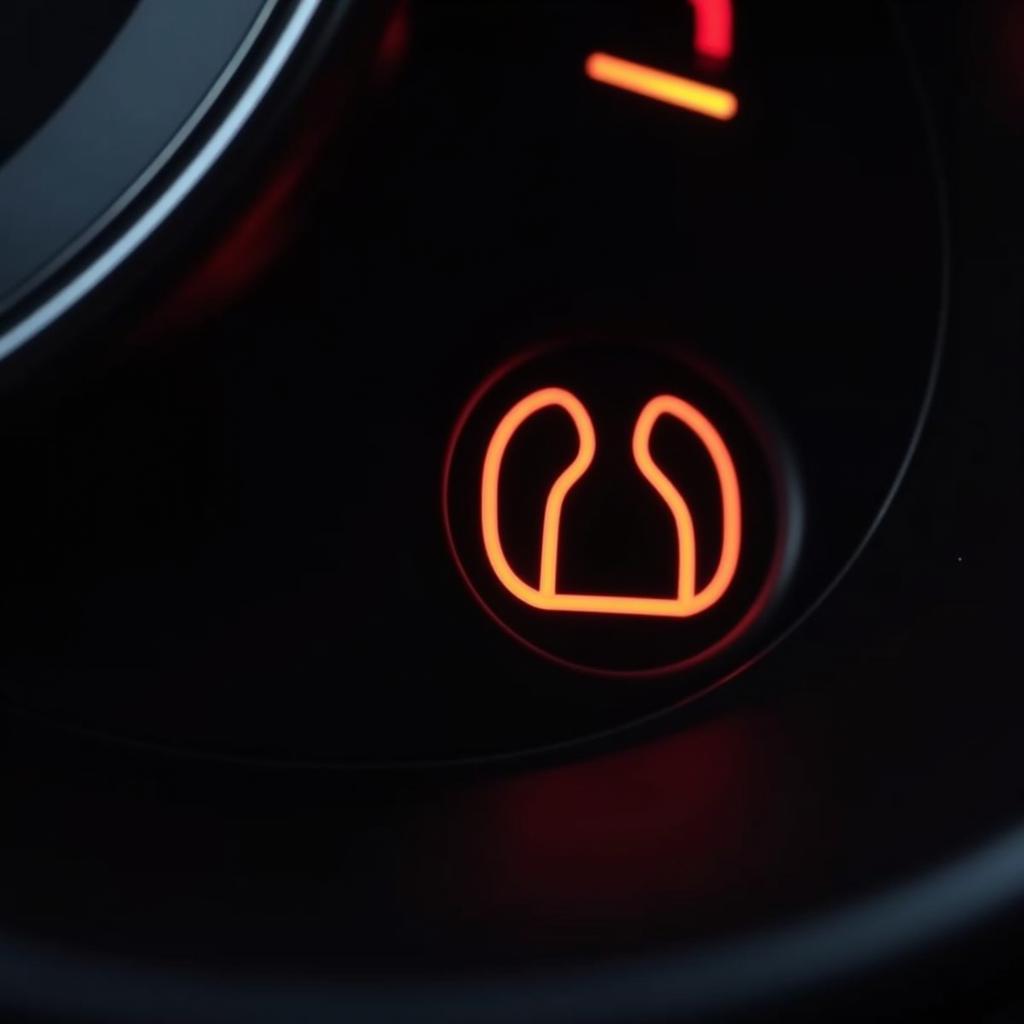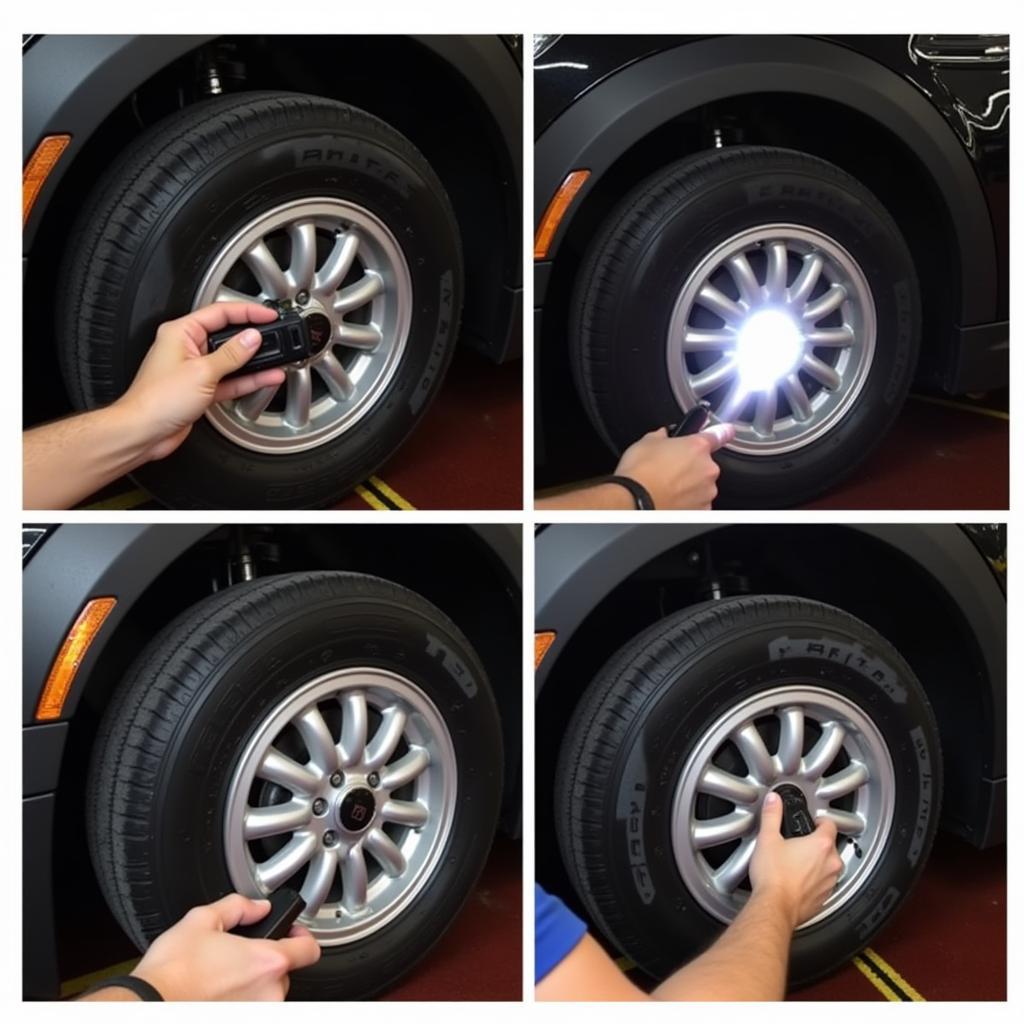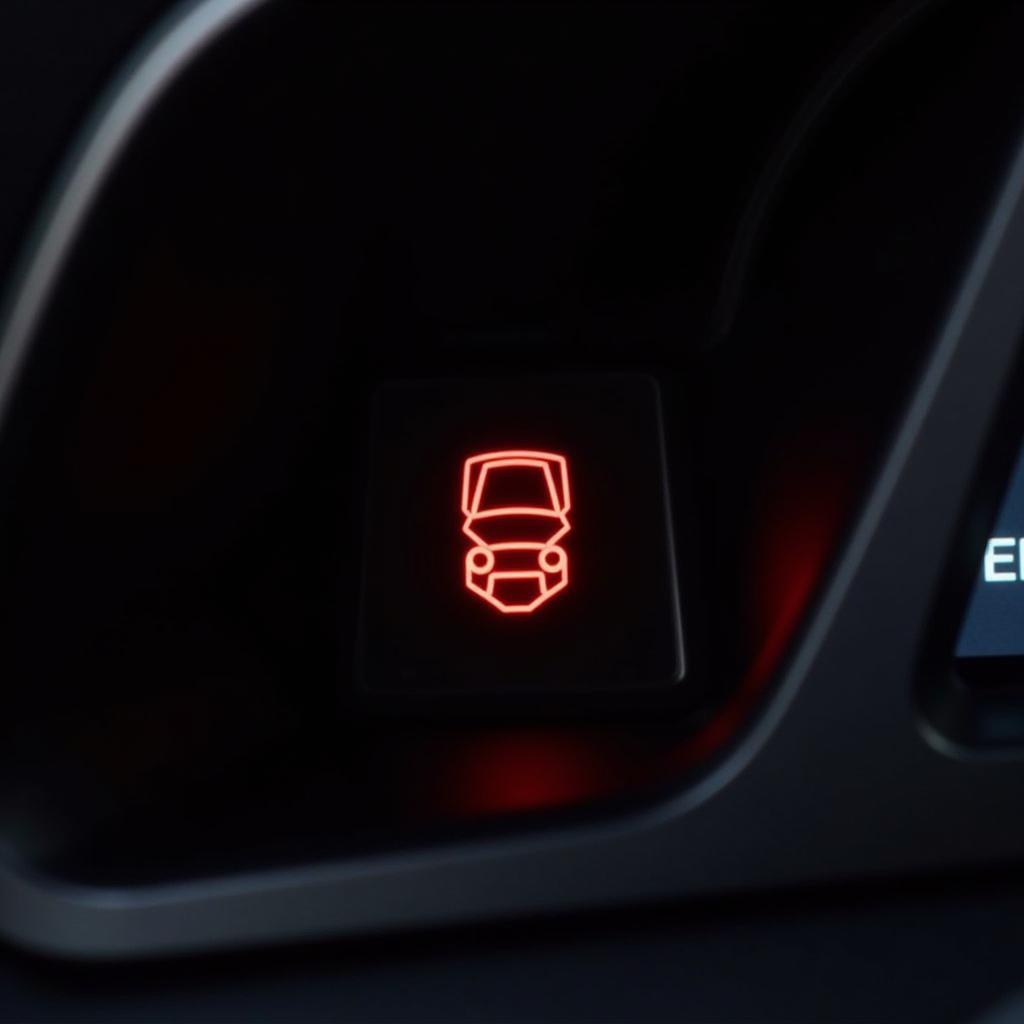The dreaded brake pad warning light on your Mini F56 has illuminated, and you’re unsure what to do next. Don’t panic! This is a common issue, and with a little guidance, you can quickly identify and address the problem. This comprehensive guide will walk you through the potential causes of the Mini F56 brake pad warning light, how to diagnose it, and the steps to resolve it.
 Mini F56 Dashboard Showing Brake Pad Warning Light
Mini F56 Dashboard Showing Brake Pad Warning Light
Understanding Your Mini F56 Brake Pad Warning System
Your Mini F56 is equipped with a sophisticated electronic brake pad wear sensor system. This system constantly monitors the thickness of your brake pads and alerts you when they reach a critical wear level. This alert comes in the form of a yellow or red brake pad warning light on your dashboard.
Ignoring this warning light can lead to further damage and costly repairs. Addressing the issue promptly ensures optimal braking performance and safety on the road.
What Triggers the Brake Pad Warning Light?
While worn brake pads are the most common culprit, several other factors can trigger the warning light in your Mini F56:
- Worn brake pad sensor: The sensor itself can become damaged or worn out, triggering a false warning.
- Faulty wiring: Damaged or corroded wiring within the brake pad sensor circuit can disrupt the signal, leading to an inaccurate warning.
- Issues with the brake fluid: Low brake fluid levels or air in the brake lines can affect brake pressure and potentially trigger the warning light.
- Control module malfunction: In rare cases, a malfunctioning control module can misinterpret signals and illuminate the warning light.
Diagnosing the Issue
 Inspecting Mini F56 Brake Pads
Inspecting Mini F56 Brake Pads
Before you jump to conclusions, it’s crucial to determine the root cause of the illuminated warning light. Here’s a step-by-step guide:
- Visually inspect your brake pads: If you’re comfortable working on your car, carefully remove a wheel and examine the brake pads. If the friction material is significantly worn down or close to the metal backing plate, they need replacement.
- Check your brake fluid level: Locate the brake fluid reservoir under the hood and ensure the fluid level falls within the minimum and maximum markers.
- Inspect the brake pad wear sensor: Look for any visible damage, such as cuts or fraying, to the sensor wire connecting to the brake pad.
If you’re unsure or uncomfortable performing these checks, it’s best to consult a qualified mechanic or a specialist in remote automotive diagnostics.
Resolving the Brake Pad Warning Light Issue
The solution depends entirely on the diagnosis. Here are the most common courses of action:
- Brake Pad Replacement: If your brake pads are worn, replace them immediately with high-quality pads specifically designed for your Mini F56 model.
- Sensor Replacement: A damaged or faulty brake pad wear sensor requires replacement.
- Wiring Repair: Any damaged or corroded wires within the sensor circuit must be repaired or replaced.
- Brake Fluid Flush and Refill: If you identify low brake fluid or suspect air in the lines, a complete brake fluid flush and refill are necessary.
- Control Module Diagnostics: A qualified technician should address any suspected control module issues, often requiring specialized diagnostic tools and software.
Can I Reset the Warning Light Myself?
While some vehicles allow for manual brake pad warning light resets, attempting this on your Mini F56 without the proper knowledge and tools can be risky. Incorrect procedures might lead to further complications or even disable essential safety systems.
For safe and accurate resets, consider consulting a qualified technician or utilizing specialized remote automotive diagnostic services. These services allow experienced professionals to remotely diagnose and resolve issues with your vehicle’s electronic systems.
Preventing Future Brake Pad Warning Light Issues
Proactive maintenance is key to preventing unexpected brake issues and ensuring optimal braking performance:
- Adhere to a regular brake inspection schedule: Consult your Mini F56 owner’s manual for recommended service intervals.
- Address any brake noises promptly: Unusual squealing, grinding, or scraping sounds often indicate a problem that requires immediate attention.
- Practice smooth braking habits: Avoid harsh braking whenever possible to minimize wear and tear on your brake pads.
By following these tips, you can extend the life of your brake components and avoid encountering the brake pad warning light again.
FAQs
Q: How long can I drive with the brake pad warning light on?
A: It’s strongly advised not to drive with the brake pad warning light illuminated. Continuing to drive can cause further damage to your braking system and jeopardize your safety.
Q: Can I replace just one brake pad?
A: While it’s technically possible, it’s highly recommended to replace brake pads in axle pairs (both front or both rear) to ensure even braking performance.
Q: How often should I replace my Mini F56 brake pads?
A: Brake pad lifespan varies depending on driving style and conditions. However, as a general rule, expect to replace them every 30,000 to 70,000 miles.
Q: Why is my brake pad warning light still on after replacing the brake pads?
A: This could indicate a faulty new sensor, incorrect installation, or an unresolved underlying issue. It’s best to have it inspected by a professional.
Conclusion
Addressing the Mini F56 brake pad warning light promptly is crucial for your safety and the longevity of your vehicle. By understanding the potential causes, taking appropriate diagnostic steps, and seeking professional assistance when needed, you can confidently resolve this common issue and get back on the road with peace of mind. If you need to reset the warning light, check out this guide: mini f56 brake pad warning reset.


